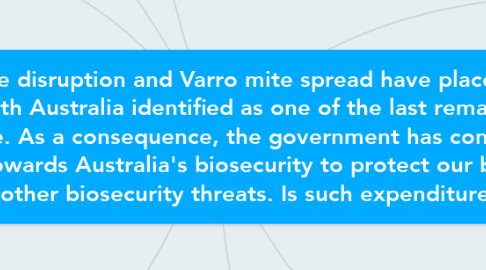Insecticides, climate disruption and Varro mite spread have placed global bee populations at risk with Australia identified as one of the last remaining regions in the worl Varroa free. As a consequence, the government has contributed large amounts of funding towards Australia's biosecurity to protect our bee populations, and to address other biosecurity threats. Is such expenditure justifies?
by Shelley Watt

1. Insecticide impact on bee population.
2. Climate disruption impact on bees.
3. Varroa Mite spread impact.
4. What would the plant be like if there were no bees?
5. With Australia being one of the few remaining countries uneffected, exporting honey being a positive financal impact.
6. How has Australia kept Varroa mite out. How is the money used.
7. What are the other biosecurity threats that are impacting the bee population.
8. What currect biosecurity measures are in place in Australia compared to other countries where there has been invaded.
9. What would the money be better spent on?
10. Are there any positives/benefits to reducing biosecurity?


